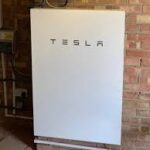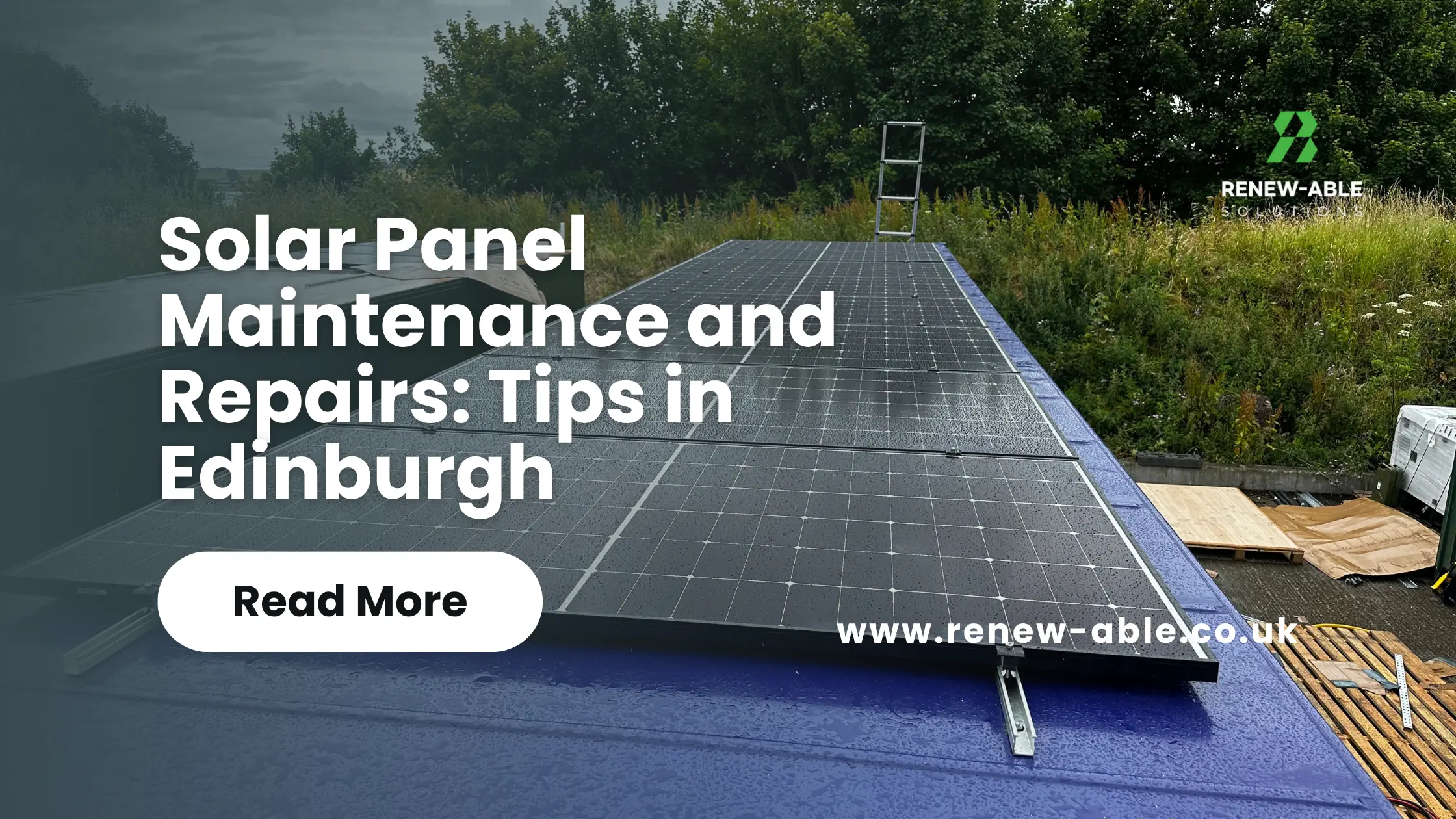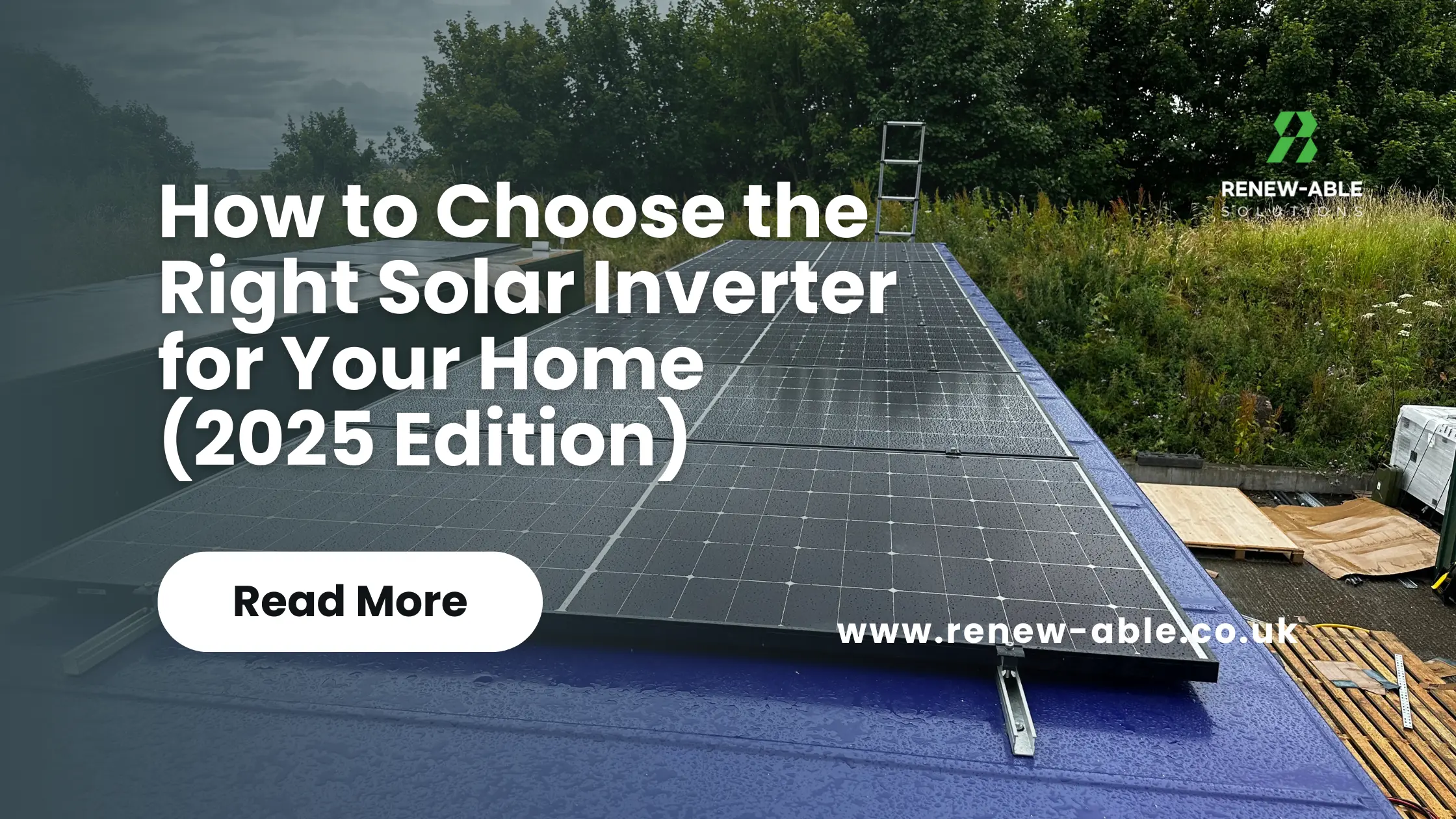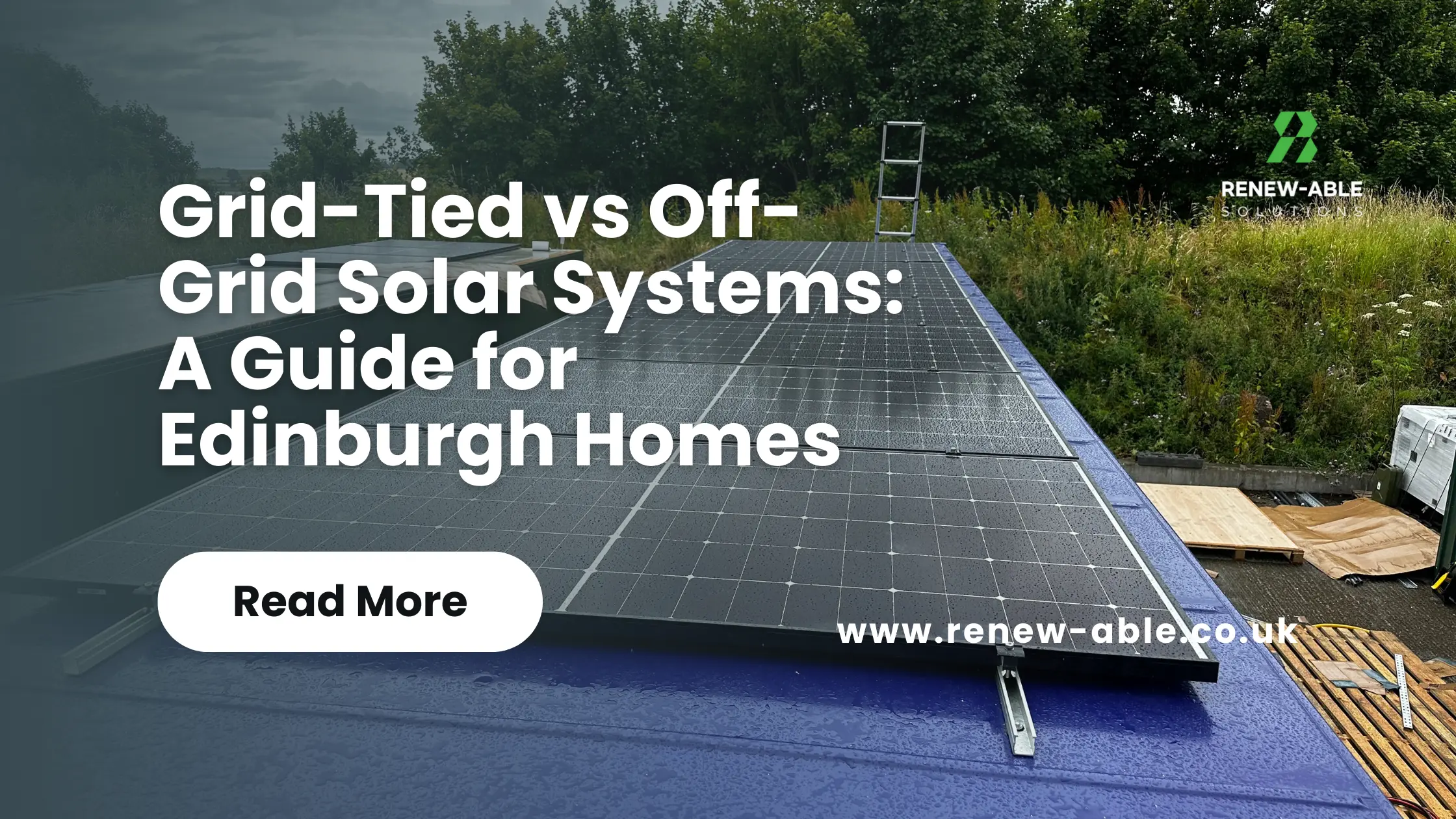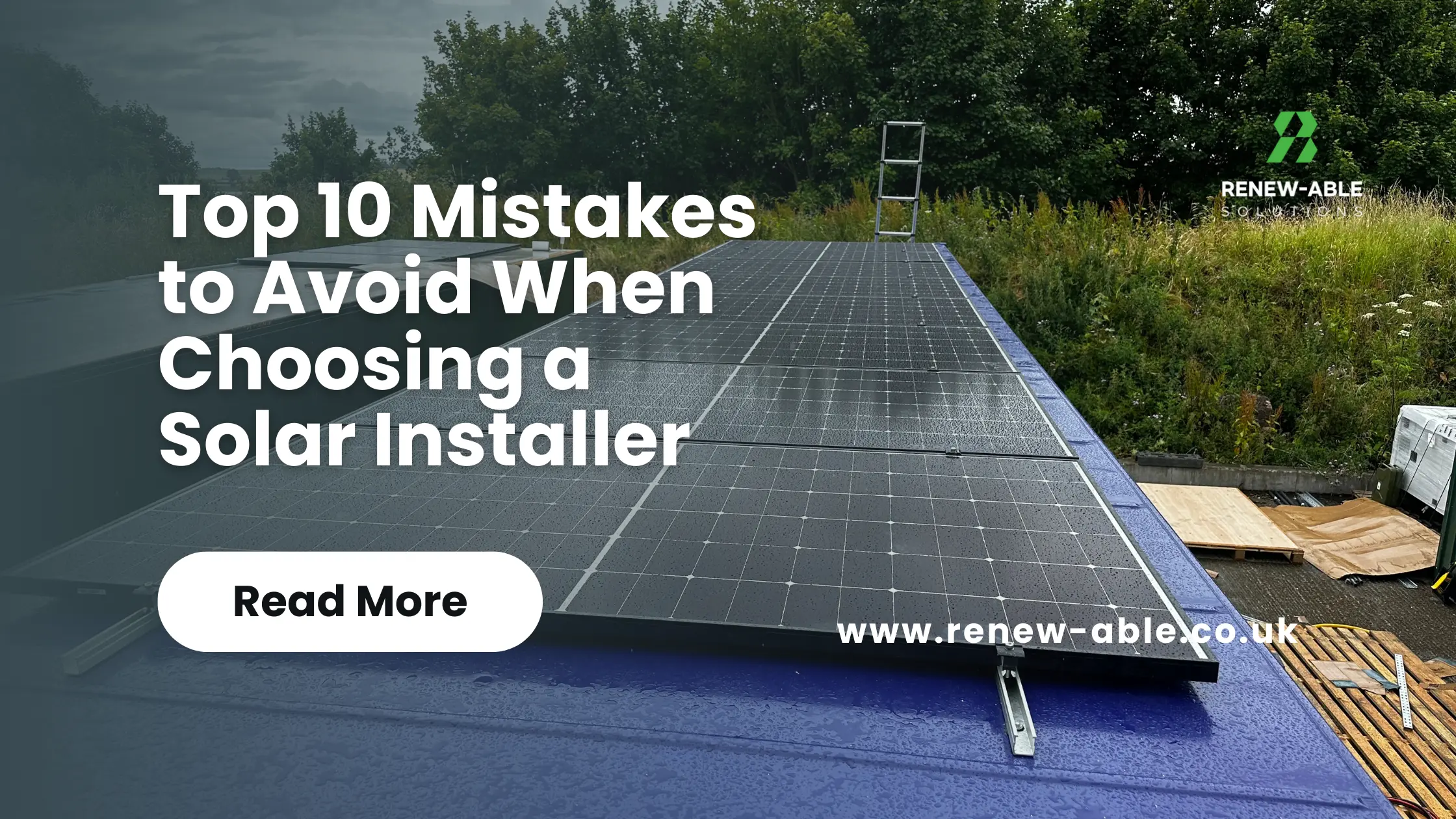Home Battery – We look at the facts and figures to help you make an informed decision whether this is a good investment
Home Battery – Solar Battery FAQ
What are the Best Types of Solar Battery?
There are 2 main factors to consider when reviewing the best types of battery; the first being its internal chemical composition, and the second is the connecting system. Although specifications of batteries can vary, it is always necessary to review the correct sizes and voltage requires for each individual task.
Lithium-Ion vs Lead-Acid Batteries
The majority of solar batteries used in recent years have lithium-ion compositions, with this battery type being found in many everyday electrical appliances such as mobile phones, laptops, calculators and laser point printers. Whilst lead-acid batteries are still commonly used, the associated technology is far older than that of lithium-ion batteries. Accordingly, lithium-ion batteries operate more efficiently, with longer life spans, and provide greater depth of discharge.
For anyone looking towards a better-quality battery, Lithium-ion models are the suitable choice, however, lead-acid batteries can be appropriate in circumstances where bulk purchases and space allocation is not an issue.
High-capacity batteries are highly sought after nowadays, for a wide range of applications. These batteries serve the purpose of recreational batteries, electric vehicles batteries, solar batteries, and a lot of other uses.
Many years ago, you would have seen that lead-acid batteries were the only high battery capacity option available in the market.
However, the market today has changed considerably as the demand has tilted towards lithium-based batteries due to their uses.
In this regard, two types of batteries shine above the rest- Lithium-ion batteries and Lithium Ferrous Phosphate (LiFePO4) batteries. Since both are lithium-based, people often ask us about the differences between the two types.
Therefore, in this article, we will explore these batteries in detail and how they differ from each other. You will know about their performance on a wide range of parameters, getting a better understanding of which battery will be the right fit for you.
Without any delay, let us get started:
Home Battery – How Do the Chemistries of Lithium-ion Batteries and LiFePO4 Differ?
Lithium ion batteries and Lithium Ferrous Phosphate batteries both fall under the class of Lithium batteries. Therefore, the construction of both these batteries has a lot of similarities.
Lithium-Ion Batteries
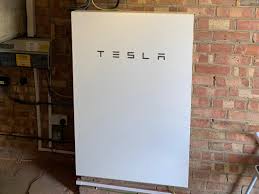
In principle, Lithium-ion batteries involve the movement of lithium ions between two electrodes in an electrolyte solution or gel.
The cathode materials are lithium-based compounds like lithium cobalt oxide or lithium manganese oxide. The anode is usually made of carbon materials, such as graphite.
Since there are many options in cathode material and the electrolyte used, many different types of lithium ion batteries are available. Some iterations use polymers instead of liquid electrolyte and are called lithium-ion polymer batteries.
A single battery cell of a lithium-ion battery typically generates a voltage of about 3.6V. To create usable electricity, three or more of these cells are used in series to create a single lithium-ion battery.
Lithium Iron Phosphate Batteries
As technology progressed, new materials were tried as cathode materials in the lithium-ion battery. One of these materials is Lithium Iron Phosphate (LiFe.
The batteries that utilise Lithium Iron Phosphate as the cathode material are called Lithium Iron Phosphate batteries (LiFePO4 or LFP batteries).
A single cell of a lithium iron battery creates a voltage between 3.2V to 3.3 V. Therefore, three or four of these cells are connected in series to create a single LFP battery.

What are the similarities between Lithium-ion batteries and LFP batteries?
As mentioned earlier, both lithium-ion batteries and LFP batteries fall under the class of lithium-based batteries. Therefore, there are a lot of similarities between the two types.
For one thing, both of these batteries rely on the movement of lithium ions to generate current. Additionally, both of these use graphite as the anode material.
There are fewer differences between lithium-ion batteries and LFP batteries than any instance where you compare any of these batteries with any battery that doesn’t use lithium.
Home Battery – How Do Lithium Iron Phosphate Batteries and Lithium-ion Batteries Compare?

We will go through the comparison between an LFP battery and other lithium ion batteries based on the various factors that are important.
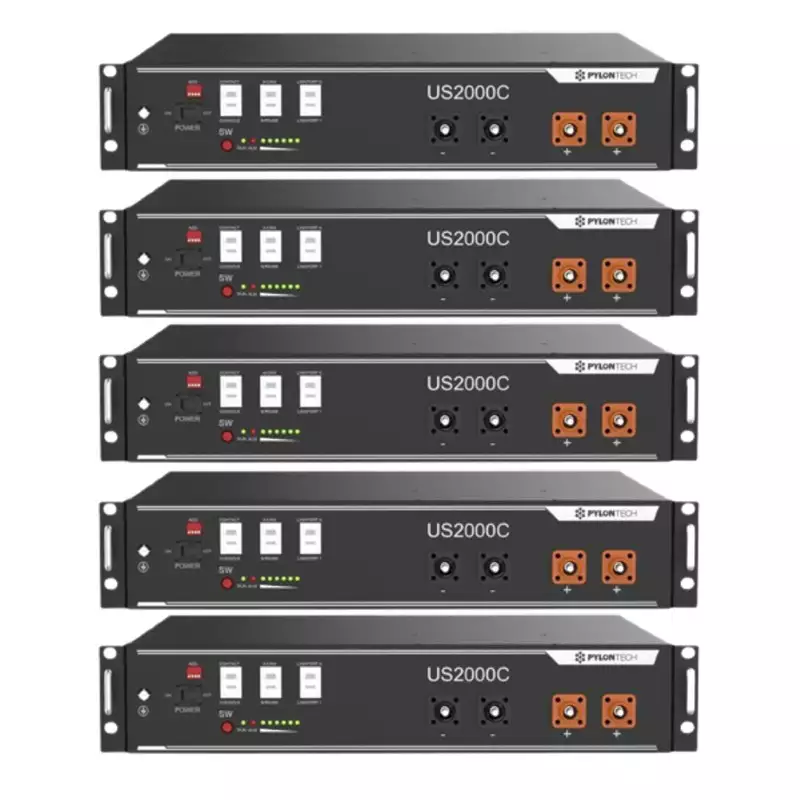
Energy Density
The energy density is the amount of electricity a battery can provide in relation to the mass of the battery. It is measured in Watt-hours per Kg (Wh/kg). If a battery has a higher energy density, a smaller mass of that battery can provide more electricity.
Lithium Ion
Lithium ion batteries have one of the highest energy density among any battery types. These batteries provide an energy density of about 100 Wh/kg to 265 Wh/kg.
LiFePO4
The energy density of an LFP battery is slightly lower than a lithium-ion battery. Their energy density falls between 90-165 Wh/kg.
Verdict: Lithium-ion batteries have a higher energy density. This is why these batteries find applications in smaller-sized, power-hungry requirements.
Cycle Life and Lifespan
Cycle life refers to the number of cycles that a battery can sustain without any drop in performance. One cycle is the process of going from one full charge to one full discharge, and then fully charging again.
A longer cycle life indicates that a battery is going to last longer, providing you with a better value for money on your investment.
Lithium ion
Lithium-ion batteries usually provide a cycle life between 300 to 500 cycles. This roughly translates to a time period of about two to three years.
LiFePO4
LFP batteries have a substantial cycle life of about 3000 cycles. This translates to a time period of above seven years.
Verdict: LFP batteries are leaps and bounds ahead in terms of cycle life and battery lifespan, lasting about four to five times longer than lithium-ion batteries.
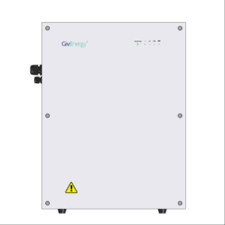
Home Battery – Depth of Discharge (DoD)
Depth of Discharge refers to the percentage till which a battery can be discharged without causing any harm to the battery. If a battery gets discharged beyond the depth of discharge, it can permanently damage the battery.
A higher depth of discharge indicates a wider performance range for the battery, since you are utilising more of the stored energy.
Lithium ion
Lithium ion batteries have a depth of discharge of between 80% to 95%. This means that you have to leave behind at least 5% to 20% charge (exact number depending on the particular battery) in the battery at any time.
LiFePO4
Lithium Iron Phosphate batteries have an astonishing depth of discharge of an astonishing 100%. This means that you can fully drain the battery without any worry of damaging it.
Verdict: The Lithium Iron Phosphate battery is the clear winner when it comes to depth of discharge. As an interesting fact, all lithium-based batteries have considerably higher DoD than lead-acid batteries, as the latter only offers a DoD of 50%.
At Renew-Able Solutions we only install LFP or LiFePo4 batteries as not only are they scientifically proven to be safer they also allow higher cycle rate and depth of discharge.
Self Discharge Rate
Even when a battery is not connected to any appliance, there are internal chemical reactions happening that drain some stored charge, even if it is negligible. The self-discharge rate is the rate at which the battery loses its charge when it is not in a connected state.
Lower self-discharge rates is better for the battery, as it indicates better chemical stability and longer charge retention.
Lithium-ion
For a lithium-ion battery, the self-discharge rate is about 5% per month. This means that if a lithium-ion battery is charged, disconnected and stored, it will go from 100% to 95% after 1 month of storage.
LiFePO4
For lithium iron phosphate, the self-discharge rate is about 3% per month. This means that after 1 month of storage, the battery will go from 100% to 97%.
Verdict: Lithium iron phosphate batteries have a slightly better performance when we talk about the self-discharge rate. Again, both these batteries perform remarkably better than lead-acid batteries, which have a terrible self-discharging of about 4% per week.
Cost per KWh

The cost per KWh is the amount of money you spend for every KWh of battery capacity. Since every type of battery is available in a variety of storage sizes, comparing them on the basis of Cost per KWh is the better option for finding cost-effectiveness.
To calculate cost per KWh, you first need to calculate the KWh rating of the battery. This value is not always listed on the battery, but it can be easily calculated.
KWh= (Voltage x Ampere Hours)/1000
Both voltage and ampere hours are always listed on the battery you buy.
Lithium-ion
A lithium ion battery uses cobalt as an electrode material, which leads to higher cost of the battery.
LiFePO4
Lithium Iron Phosphate battery uses cobalt-free options like iron and phosphate, both of which are way cheaper.
Verdict: Lithium iron phosphate battery is slightly cheaper than its lithium-ion counterpart.
Weight
Weight can be a crucial factor for applications like electric motors, where weight can affect performance.
Lithium-ion
Lithium ion batteries contain compounds of lithium manganese oxide and lithium cobalt oxide, both high density materials that weigh more.
LiFePO4
Lithium iron phosphate contains compounds of iron, which is considerably lighter than the metals used in a Lithium-ion battery.
Verdict: Lithium iron batteries weigh less than a lithium-ion battery of the same capacity, with a difference of about 50% on average.
Applications
When deciding on the battery type, it is important to ascertain if the particular type would be suitable for your required applications. Here is an application comparison of these two types of batteries:
Lithium-ion
Due to the higher energy density, lithium-ion is more suitable for applications that have limitations on the battery size. The most prominent of these applications are electronic devices such as electronic cigarettes, phones, and other small rechargeable devices.
LiFePO4
Due to their numerous advantages and better performance, lithium iron phosphate batteries have extensive applications in electric vehicles, recreational vehicles, solar batteries, and more.
Verdict: The applications of both these batteries are quite different, so each one is the winner in its own domain. When there is a serious size limitation, lithium-ion performs better and when high performance is required, lithium iron batteries perform better.
Home Battery – Cold Weather Usage

When the weather drops below freezing point, the operational capability of most batteries decreases, and many stop functioning completely. Lithium batteries are very prone to freezing temperature and don’t work below a certain temperature point.
Lithium-ion
If you have been in an extremely cold region, you will notice that your smartphone stops working in extreme cold, due to the battery shutting down. All lithium-ion batteries are prone to cold weather in the same way.
LiFePO4
Lithium iron phosphate also ceases to operate at very low temperatures. However, high-quality lithium iron phosphate batteries, such as those offered by Ecotreelithium, come with a battery management system (BMS) that can heat the battery automatically at cold temperatures.
Verdict: The BMS features of a lithium iron battery tips the scale in its favour during the cold weather operation of the battery.
Thermal Stability
The thermal stability refers to the temperature related parameters such as overheating of the battery and thermal runaway. Thermal runaway is a serious concern that denotes the uncontrolled overheating of a battery, which can even cause it to explode.
Lithium-ion
Lithium-ion are notorious for their temperature behaviour as they get overheated very commonly. There have been instances of lithium manganese oxide batteries exploding in laptops. Thermal runaway is common in these batteries.
LiFePO4
First of all, LiFePO4 batteries are 100% incombustible, so there is no chance of a lithium iron battery catching fire or exploding. There is no overheat in these batteries regardless of how you charge them. Additionally, there is zero thermal runaway.
Verdict: When you compare the thermal stability of LiFePO4 vs lithium-ion, lithium iron batteries are the major winner.
Environmental Concerns

Manufacturing companies and users are driving towards environmentally safe products and processes. As such, it is important to find out which battery is more environmentally friendly.
Lithium-ion
Lithium-ion batteries are found to release a large number of toxic gases, especially at high temperatures. These batteries have a shorter life span, so you have to change them often leading to high wastes.
LiFePO4
Lithium iron batteries have no environmental concerns since they do not release any type of toxic gases or chemicals. Additionally, these batteries have a long life span, leading to few battery changes.
Verdict: Lithium iron phosphate is one of the most environmentally-friendly batteries out there.
Warranty
A longer warranty period guarantees a better return on investment since you are assured that the battery will work for at least the warranty period.
Lithium-ion
Since the entire lifespan of a lithium-ion battery is about two years, you can expect a warranty of six months to one year. For instance, you can see the common six-month warranty that you get on the batteries in smartphones.
LiFePO4
Lithium iron phosphate typically comes with a warranty period of 5 years. The highest quality LFP batteries, such as those provided by Ecotreelithium, come with a warranty of 6 years!
Verdict: Lithium iron phosphate batteries don’t just sound good on paper, there is a longer warranty period to provide it. They are definitely far ahead of their lithium-ion counterparts when you compare six months vs the six-year warranty period.
LiFePO4 vs Lithium-ion: Which One to Choose?

While both of these are lithium batteries, there are significant differences in performance between the two.
LiFePO4 is the better choice in all factors that matter. With these batteries, you get better performance, better value for money, and a considerably longer lifespan.
The only factor where the lithium-ion counterpart shines brighter is when you consider the energy density. This makes them the better choice for electronic applications such as smartphones, laptops, electronic cigarettes, and any other electronic appliances.
Besides the electronics, LiFePO4 batteries are better suited for every other application. Whether it is electric vehicles, solar panels, caravans, motorhomes, or any high capacity requirement, LiFePO4 is the best investment.
Are Lithium Batteries Better Than the Non-Lithium Alternatives?

The debate between lithium iron phosphate batteries and lithium-ion batteries clearly favours the former. However, when you compare any of these two types with non-lithium batteries, lithium cells win by a huge margin.
Lead Acid Batteries
Lead-acid batteries gained huge popularity as automotive starter batteries and UPS batteries. However, lithium batteries are taking over their market share day by day.
While lead-acid batteries are cheaper, lithium batteries can last ten times longer. Additionally, lead-acid batteries require constant maintenance such as electrolyte top-up and terminal maintenance. These things are not a requirement in lithium batteries.
For an in-depth comparison between the two types, you can read our guide on lead acid vs lithium batteries.
Gel Batteries
Gel batteries were developed as an improvement on the lead acid batteries, with a sealed construction that doesn’t require electrolyte top up.
However, when you compare these to lithium batteries, they still lag far behind. Firstly, a lithium battery lasts longer than gel batteries. Additionally, gel batteries require special provisions like venting in the battery compartment, which are not a requirement for a lithium battery.
There are many advantages of lithium battery when compared to gel battery. We have a detailed article about lithium vs gel batteries for detailed knowledge.
AGM Batteries
AGM batteries are one of the newest battery types and have become widely adopted in place of lead batteries and gel batteries.
However, the performance of these batteries also feels pale when you put them besides a lithium battery.
Lithium based batteries, especially LiFePO4 batteries, can last six times longer and offer a higher depth of discharge.
While lead acid battery had the advantage of being enormously cheaper, AGM batteries are expensive. Therefore, it is better to choose LiFePO4 batteries over AGM regardless of the application you consider.
Our guide on AGM vs Lithium batteries will give you a better idea of the differences between these two batteries.
Home Battery – Overview
Lithium batteries are by far the best types of batteries that one can find today. Within the lithium battery class, people have been often confused between commonly available types such as lithium-ion and lithium iron phosphate batteries.
With the help of the extensive information provided here, you can make the decision between LiFePO4 vs lithium-ion batteries very easily.
If you are in the market for a new battery, we recommend checking Renew-Able Solutions range of LiFePO4 batteries. These not only come with a six year warranty, but are also equipped with many other features that you won’t find anywhere else.
For instance, you get a battery management system that constantly regulates the charging and temperature for optimising the battery life. Not to forget, there is a six-year warranty on the battery itself. What else can one ask for!
Home Battery – Frequently Asked Questions (FAQs)
Here are the answers to some commonly asked questions about lithium batteries.
Is LiFePO4 better than Lithium-ion?
Yes, a Lithium iron phosphate battery is quite better than lithium-ion and a better value for money. However, for small electronic devices like smartphones, lithium-ion is the better choice.
Can you charge LiFePO4 battery with Lithium-ion battery charger?
Yes, it is possible to charge a LiFePO4 battery with a lithium-ion charger or even an AGM charger. The important thing to ensure is that the charger should have the exact voltage rating as required by the LiFePO4 battery. A lower voltage charger won’t charge the battery to 100%.
Direct Current vs Alternating Current Batteries
In addition to considering the correct internal battery composition, it is also important to understand the manner in which a battery does or doesn’t connect to your Solar PV system and there are two main ways of linking a battery storage system.
- DC Coupled: These batteries are installed on the same side of the solar inverter as the solar PV panels. They charge from the panels and their DC is only converted to AC when it’s used. If installed at the same time as a Solar PV system, the battery and panels would usual share the same inverter, commonly known as a ‘Hybrid’ inverter. DC-coupled systems can be retrofitted without changing your current inverter; however, you will need a charge controller for your battery.
- Pro – More efficient power transfer than AC by up to 3%.
- AC Coupled: These batteries are installed on the grid-side, where the solar PV’s DC has already been converted to AC. A separate inverter converts the AC back to DC for storing in the battery. When the battery discharges, the same separate inverter converts the DC back to AC.
- Pro – Higher energy capacity as you get the combined power from battery and solar PV system.

Home Battery – Is it Worth getting a Solar Battery?
Solar batteries can be an excellent long-term investment for any homeowner or small to medium business owner. It is, however, vital to consider a number of factors when deciding whether a battery will save you money or not.
The main cost for a solar battery comes with its initial purchase and installation. A number of batteries will have a 10-year warranty included, providing piece of mind, and supporting the fact that solar storage systems will provide a return on investment and not require frequent replacements.
As prices have decreased significantly overtime, with the push for renewable energies taking centre stage, it is highly likely that these prices will drop even further in the coming years, making these storage units even more attractive to prospective purchasers.
Solar PV systems have a long lifespan, being able to last for upwards of 30 years. As such, solar batteries which also can last up to 20 years will provide a long-term solution for energy subsidisation and storage. Whilst many people may be off put by the initial price, these prices have become far more affordable than over ten years ago, with the prices decreasing by over 65%.
Prospective owners ought to account for the utility of solar batteries allow the use of up to 30% more electricity produced by the solar panels than if this storage was not present. This is according to E.ON which based these figures on a 12 x 315W panel setup configured to a 9.6 kWh battery. The total savings would amount to £560 per year.
How much is a Solar Battery for a House?
Comprehensive solar batteries systems usually cost between £4,500 up to over £10,000, depending on a number of specification variables such as a battery’s energy capacity, brand, construction material, lifespan and the installation cost.
A Which? Survey conducted within the UK found that 25% of the participants paid under £3,000, alongside 41% paying between £4,000 and £7,000 for a battery storage system.
This survey did exclude the cost of solar PV in a number of cases, and when looking to get the best deal it would be financially wise to consider purchasing a solar panel and battery system at the same time.
Whilst this will be beneficial, it does not prevent the possibility of finding a great deal for a solar battery as a purchase.
Home Battery – How Good are Solar Batteries?
Solar Batteries can greatly improve the money-saving potential created when a solar PV system has been installed on a house. Having a solar battery system in place will increase the self-consumption of your existing solar PV system. As well as reducing your daily electricity costs, having this unit in place will also reduce your environmental impact, lowering your carbon footprint.
In addition to this, it is also possible to operate independently from the UK power grid for a period. With energy companies frequently increasing their energy prices, having a solar battery in place will go a long way to lowering the impact of these price hikes.
In the event of a power outage, having a solar battery may also allow for sustained power use, allowing homeowners to continue on with their activities in place will also allow activities which were underway at the time to be restarted. Any solar battery with backup capability will provide the opportunity for a small business to continue with work through electronic devices during downtimes.
For particularly heavy electrical usage it would be recommended to have a charge controller which allows for significant depth of discharge, and a number of units which have substantial useable capacities.
Business owners should keep in mind that not all solar batteries are ‘Uninterrupted Power Supplies’ which would allow for a seamless transition from the National Grid to the stored energy. If the aim of an Employer is to have this function it is essential to ensure that the battery has this function, and not only an ‘Emergency Power Supply’ capacity.
Home Battery – How long can a Solar Battery hold a Charge?
This question can address a number of aspects which need to be considered. A general answer when determining how long a fully charged solar battery can deliver power to a house in the UK would dictate that it can last overnight when the solar panels are not producing energy. To give an accurate duration it is important to understand a number of variables; the average daily power consumption of your household, what the capacity and power rating of the solar battery is, and whether or not you are connected to the National Grid.
To understand this in practical terms, the LG Chem RESU10 has a nominal capacity of 9.8kWh, Usable Capacity 8.8kWH, its Peak Power is 7kW however this is only for 3 seconds, so the Max Power is 5kW. The RESU10 can provide 5kW Max Power, but as this is only a battery, it’s the charge controller that provides the charge/discharge rate. In some situations, this could be between 2.5kW – 5kW.
To determine the duration for which this solar battery will last, the energy storage capacity will be divided by the accumulative total power consumption of all connected household appliances used.
An LCD TV, on average will use 150 Watts, a stereo receiver uses 450 Watts, and a 40-Watt LED Bulb will use 10 Watts per hour. If all of these items were the only appliances used throughout a day, and where left on for a 24-hour period the power demand would be:
- LCD TV: 150 x 24 = 3.6 kWh (3600 Watts)
- Stereo Receiver: 450 x 24 = 10.8kWh (10,800 Watts)
- 40-Watt LED Bulb: 10 x 24 = 0.24kWh (240 Watts)
These 3 devices would total 14.64 kWh of energy usage within a day. Keeping in mind that the usable capacity for an LG Chem RESU10 is 8.8kWh, it becomes clear that the battery would not last a full 24-hour period, without being supplied energy through the connected solar panels.
This basic example gives a general idea on how to calculate battery duration during a power outage, however, remember that many appliances such as garage door opener, blow dryers and kettles are only used for a very small fraction of a day. With a 500-Watt item which is used for 10 minutes only consuming 50 Watts of energy. With this intermittent usage, and high demand devices not being active for lengthy periods of time it is highly like that a battery with 10 kWh capacity could last multiple days.
Home Battery – Do I need a Battery for my Solar Panel System?
It is not necessary to have a Solar Battery present in order to have a functioning Solar PV System as Solar Panels and Solar Batteries are independent components.
A Solar Battery will require an installation of panels in order to store energy, however, Solar Panels can supply energy in real-time and feed any excess energy produced back into the grid. Doing so can allow for a secondary power source to be available, independent of the National Grid, allowing for continued power usage during any potential power outages.
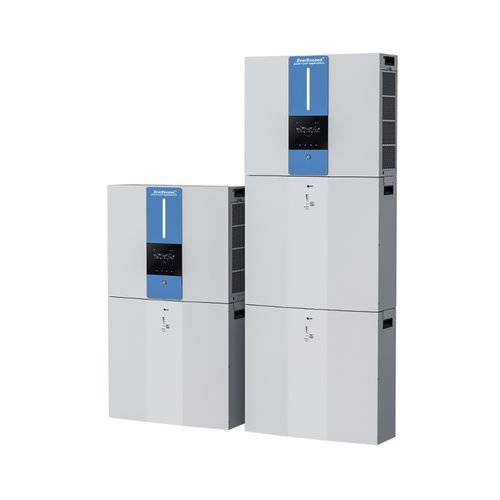
Home Battery – What is the Depth of Discharge (DoD) of a Solar Battery?
A solar battery’s DoD represents the percentage of a battery which has been discharged, relative to the Nominal Capacity of a battery. A Tesla Powerwall 2 has a Nominal capacity of 13.5 kWh of electricity. If 12 kWh were to be discharged, the DoD would amount to 88%.
It is important to note that different battery models will have different maximum discharge rates before requiring a recharge. The Powerwall 2 has a maximum discharge of 100%, meaning 1 cycle would allow a user to draw all 13.5 kWh of electricity from the unit without affected the battery.
In comparison, the LG Chem RESU10H has a Useable Capacity of 95%, based on a Nominal Capacity of 9.3 kWh. This means that the maximum DoD possible from this unit would be 8.84 kWh’s before a recharge becomes necessary.
From this, it becomes clear why DoD is important, as higher DoD translates to being able to use more energy stored within a battery. Many modern lithium-ion batteries advertise a DoD of over 90%.
Home Battery – What is the Cyclic Life of a Solar Battery?
The lifespan of a solar battery is determined by the number of cycles it can use. A battery cycle is defined as the number of times a battery can be fully charged and discharged before they reach the end of their functional life.
Cycle life specifications can vary substantially depending on their internal chemistry. Fortunately, lithium-ion batteries, which solar storage units primarily use, have the greatest number, typically having 4000-8000 cycles within their lifetime.
In practice, a solar battery may be used four times at 25% to reach one full cycle, provided the DoD of the battery in 100%.
Home Battery – How many Solar Batteries does it take to power a House?
There is no universal answer to this as there are diverse energy requirements for different houses. Whilst a large 4-bedroom detached house will nearly always use much more energy than a small bungalow with only 1 bedroom, the energy consumption may disproportionately differ for reasons such as the bungalow resident using numerous electrically demanding appliances frequently whilst a family in a 4-bedroom detached house may be far more conservative in their energy usage. Most energy guidelines revolve around the principle of ‘the more electricity you use the more solar panels you will require to offset this’.
It is advisable to review your homes previous yearly energy usage, with specific reference being made of your electric bills. The average 4-person house uses approximately 3,600 kWh of energy per year in the UK, however, depending on the appliances and devices used, the frequency of use, and the number of users will significantly affect the kW’s used.
Energy outliers can consume a great deal more than 3,600 kWh, going about 10,000 kWh of use per year, whereas a conservative energy user may only use the bare essentials and consume 1,000 kWh. To discover how much electricity your home uses, review previous energy bills, which will display your electricity usage in kWh over a specified period of time.
To calculate the system size with a system performance that will contribute to the 3,600-kWh used in an average 4-person house depends on a large number of factors. The Microgeneration Certification Scheme (MCS) created the methodology described below which is necessarily simplified in order to create a standard method that can be used to achieve a reasonable estimation of performance without it being an unduly complex procedure. The purpose of a standardised procedure is intended to prevent miss-selling and overestimation of PV systems – such that all customers will receive a system performance estimation completed to a standardised procedure.
The estimated annual electricity generated (AC) in kWh/year of installed system shall then be determined using the following formula:
Annual AC output (kWh) = kWp x Kk x SF
Kk – kWh/kWp Value. Tables of kWh/kWp (Kk) values are provided for each postcode zone in the UK. The tables provide kWh/kWp values for the zone in question for 1° variation of inclination (pitch) and 5° variations of orientation. During the site survey, you will make note of the roof pitch (inclination) and the orientation from the south. So, for example, a solar array facing due south has an azimuth value of 0⁰ and in this example has a 40⁰ roof pitch. Using these values for our Postcode Zone (LN = 11) you look up the table for the Kk value to match i.e. 893
SF – Shading Factor. Where there is an obvious clear horizon and no near or far shading, the assessment of SF can be omitted and an SF value of 1 used in all related calculations. Where there is a potential for shading from objects further than 10m away from the centre midpoint of the array then MCS has provided a procedure to calculate the SF value which will be less than 1.
kWp – Size of the Solar PV Array. The kWp value used shall be the sum of the data plate value (Wp at STC) of all modules installed (the value printed on the module label). So for this example, 14x 285w panels would equal 3.99 kWp
Calculation based on the above information:
Annual AC output (kWh) = 3.99 kWp x 893 Kk x 1 SF = 3,563 kWh
So, in this example, this 14 panel 3.99 kWp Solar PV system will provide 3,563 kWh of annual electric. This would contribute highly towards the 3,600-kWh used in an average 4-person house; however please note that the annual generation is only during the sunlight hours, whereas the average use will include night time use.
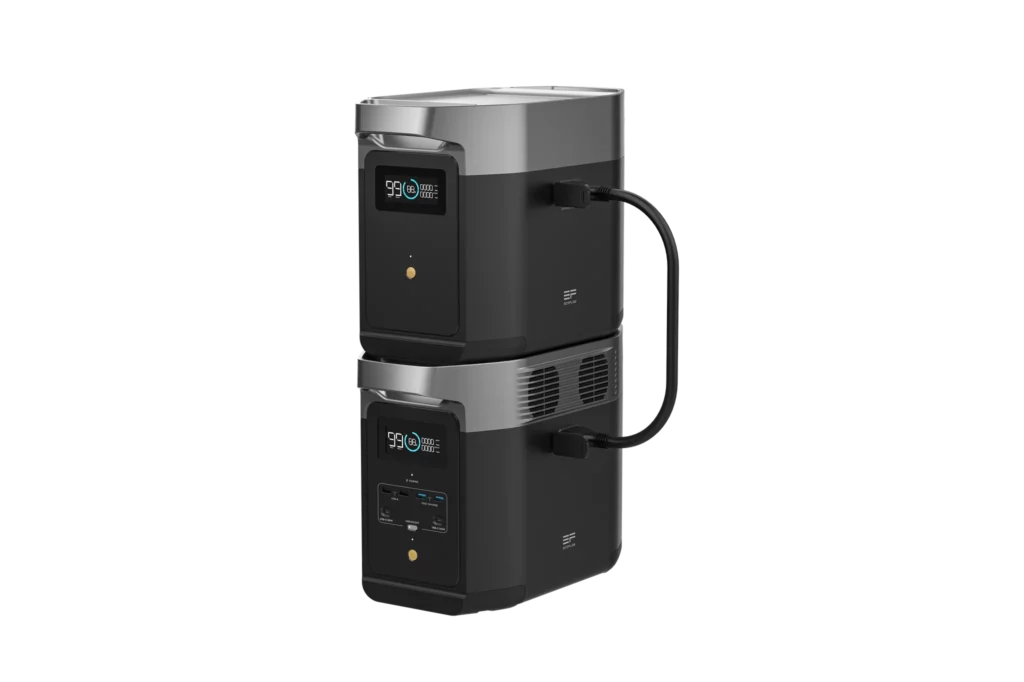
Home Battery – What should I know about the Solar Battery system before buying?
After over 10 years of being in the Solar industry, it still surprises us of how many people don’t get more than one quote, as well as making decisions on quotes without the data to compare.
You may now be interested in a Solar Battery system, and to fully understand what you are buying, UK Alternative Energy recommends getting the answers to the following questions before making a decision:
Home Battery – What is the Useable Capacity of the battery?
Capacity is the amount of energy in kWh (units) that a battery can store. Batteries should never be drained completely. However, some are misleadingly sold quoting ‘total/nominal’ capacity. Check what’s being stated. ‘Useable capacity’ is the figure you need to know. The LG Chem RESU10 has a nominal capacity of 9.8kWh, however, it’s Usable Capacity is 8.8kWh. It will never fully discharge to prevent damage to the battery cells.
What are the Charge/Discharge rates?
Home Battery – So, in the previous question, we’ve discussed on ‘Useable Capacity’, so you can potentially store a large amount of energy ready to use whenever needed. The next important thing is how much your Solar PV can charge the battery as well as deliver back to your house at any one time.
Discharge rates depend on the charge controller, even for an LG Chem RESU10 which can store 8.8kWh of energy, the charge controller installed may only be able to charge/discharge 2kW at a time. So, if the battery can only deliver 2kW of power to the house, this is just enough for a kettle with a little spare for other requirements.
Likewise, if you’re generating 4kW then 2kW can go to the battery, potentially wasting the other 2kW and directing it to the National Grid.
It’s vital that you check the power output before you make a purchase, otherwise you may find yourself drawing a lot of energy from the grid even though you have energy in your battery.
Home Battery – Will it work in a power cut?
Despite expectations, some storage systems will not provide power during a power-cut. Most systems are just for energy storage to increase the self-consumption of the electricity generated by your solar panel system.
However, some offer the backup capability to provide power when there’s a power cut. These can be limited for an ‘Emergency Power Supply’ (EPS) to selected circuits in the house. Again, you will be limited by the amount of power the battery can provide during a power cut based on its discharge rate. A battery may run out of power before the power cut ends – or have already run out of power if it’s been discharging all evening and the power outage starts late at night or early in the morning.
If you require your battery storage system to provide power during power-cuts it is important to talk this through with your storage installer from the outset as the system will need to be carefully designed and set-up to your specific requirements.

What is a Home battery lifetime?
A battery’s efficient lifetime depends on the technology and the way in which the battery is used – this is significantly affected by the number of ‘cycles’ (complete full battery charge and discharge) that they undergo. Manufacturers generally give an expected lifetime in years and/or in ‘charge-discharge cycles’.
For example: ‘Life expectancy = 10 years or 10,000 cycles, whichever is the sooner’. Lithium-ion batteries last longer than lead-acid: with a 10-year lifetime expectancy as standard, with this longevity improving all the time. Lithium Phosphate Batteries have an even longer lifetime with more battery cycles and less degradation on performance over a longer period of time.
Home Battery – What is the product warranty?
A product warranty is a guarantee that an item will perform to a certain standard for a designated period of time. Most battery storage systems come with a 5- or 10-year product warranty, very much like your Solar panel system inverter.
Home Battery – What is the price (£) per kWh of Useable Capacity?
If you have the information from above, you will be able to calculate this yourself and we recommend this as it sheds a light on the comparison of products and quotes. For example, you may have two quotes:
(1) £4,000 and;
(2) £8,000 but broken down,
(1) may have a useable capacity of 3kWh and;
(2) 10kWh.
So (1) is costing £1,333.33 per kWh of useable capacity and (2) is £800 per kWh of useable capacity. This makes it clear to see that whilst (2) is the larger outlay, you are getting more for the money as well.

